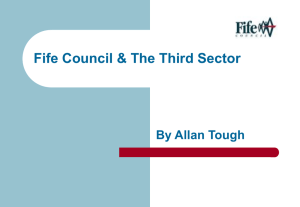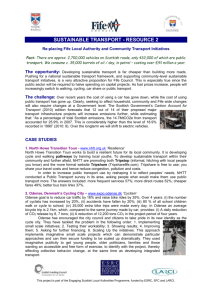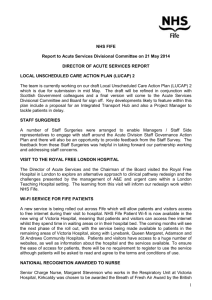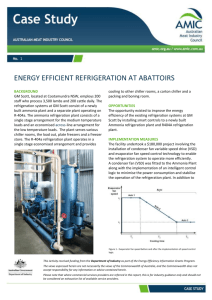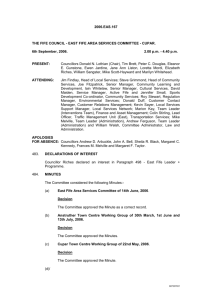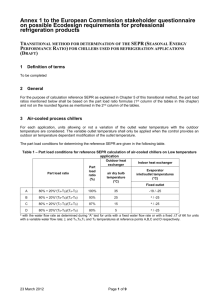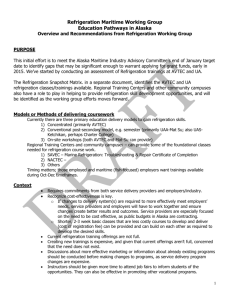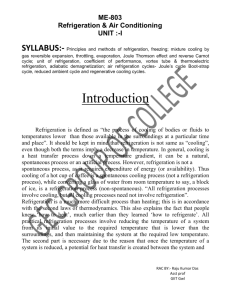ec regulation no 2037/2000 – ozone depleting substances
advertisement
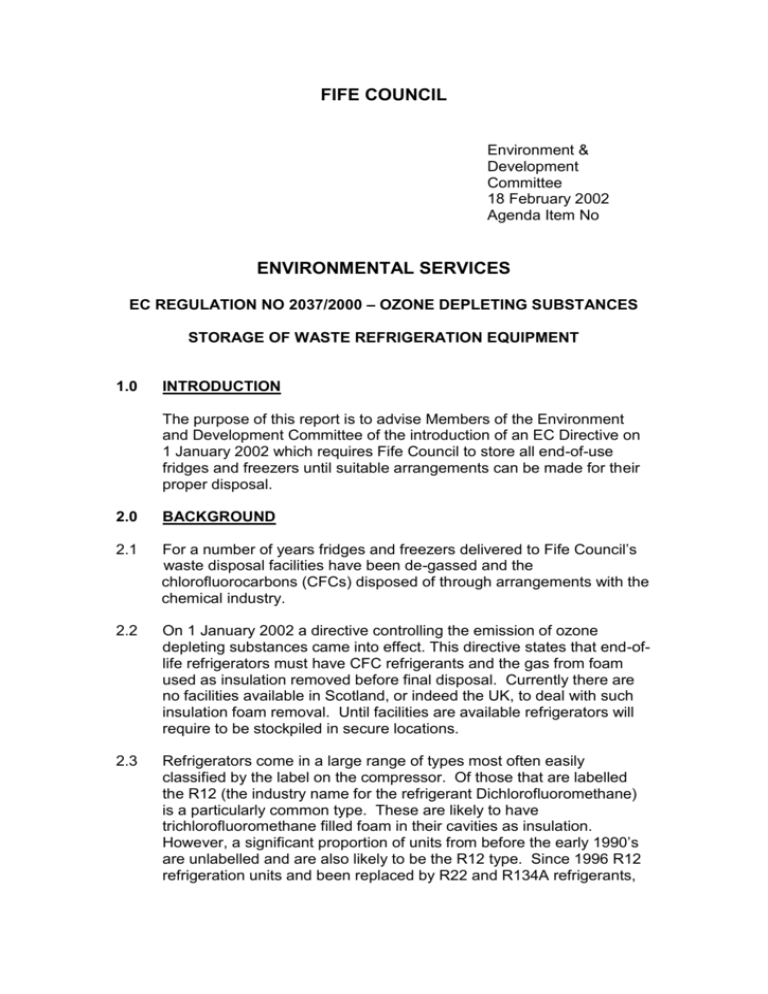
FIFE COUNCIL Environment & Development Committee 18 February 2002 Agenda Item No ENVIRONMENTAL SERVICES EC REGULATION NO 2037/2000 – OZONE DEPLETING SUBSTANCES STORAGE OF WASTE REFRIGERATION EQUIPMENT 1.0 INTRODUCTION The purpose of this report is to advise Members of the Environment and Development Committee of the introduction of an EC Directive on 1 January 2002 which requires Fife Council to store all end-of-use fridges and freezers until suitable arrangements can be made for their proper disposal. 2.0 BACKGROUND 2.1 For a number of years fridges and freezers delivered to Fife Council’s waste disposal facilities have been de-gassed and the chlorofluorocarbons (CFCs) disposed of through arrangements with the chemical industry. 2.2 On 1 January 2002 a directive controlling the emission of ozone depleting substances came into effect. This directive states that end-oflife refrigerators must have CFC refrigerants and the gas from foam used as insulation removed before final disposal. Currently there are no facilities available in Scotland, or indeed the UK, to deal with such insulation foam removal. Until facilities are available refrigerators will require to be stockpiled in secure locations. 2.3 Refrigerators come in a large range of types most often easily classified by the label on the compressor. Of those that are labelled the R12 (the industry name for the refrigerant Dichlorofluoromethane) is a particularly common type. These are likely to have trichlorofluoromethane filled foam in their cavities as insulation. However, a significant proportion of units from before the early 1990’s are unlabelled and are also likely to be the R12 type. Since 1996 R12 refrigeration units and been replaced by R22 and R134A refrigerants, these are not ozone depleting. Unfortunately the gases used in the insulating foam have not been subject to such a rigorous regulation. 2.4 A further problem has been identified in relation to the characteristics of CFC and replacement chemicals being used in refrigeration units. Many have significant global warming potential. Over 100 years R12 has a global warming potential 8,500 times that of CO2 for the same weight. The replacement refrigerants also have a high global warming potential. For example R22, with a global warming potential of 1,700 times that for CO2, is seen as a transitional solution but will be banned from 2020. R134A is seen as a long term replacement for R12 but has similar global warming potential to R22. Greenpeace cites the ECO Labelling Regulation committee of the European commission as wanting to rule out both R134A and R22 from being used in the future. 3.0 CURRENT SITUATION 3.1 On the 6 December 2001 the Scottish Executive issued guidance to local authorities on the storage of waste refrigeration equipment. Compliance with this guidance requires Fife Council to separately collect and store in secure and licensed sites all end-of-use refrigeration units. Staff from Environmental Services are currently negotiating with representatives from the Scottish Environment Protection Agency (SEPA) over the use of existing landfill sites and transfer stations for this purpose. Due to the restrictions on external storage it may be necessary to consider the short term lease of an industrial unit for this purpose, the Head of Economic Development has been advised of this possibility. 4.0 RESOURCE IMPLICATIONS 4.1 The Scottish Executive has estimated that Fife Council will be required to dispose of approximately 16,000 refrigeration units per annum. Since 1 January there has been a noticeable increase in the number of domestic fridges and freezers being uplifted as a special collection since electrical retailers have withdrawn their “ take back” schemes. 4.2 It is estimated that the additional cost of separately collecting and storing each refrigeration unit will be in the order of £10 per unit. This has been identified as a spending pressure within the 2002/03 budget submission, however, additional costs are already being incurred by Environmental Services. 4.3 The future cost of processing these units has been estimated at approximately £30 per unit. In addition to this there will be costs in transporting these units from storage facilities in Fife to the nearest treatment facility. 4.3 At the Convention of Scottish Local Authorities (COSLA) Waste Management Forum on 27 September 2001, Waste Managers were advised that the Scottish Executive was considering the cost implications to Local Authorities. 4.4 In England and Wales, local authorities have received £6 million of additional funding this year to offset their costs from 1 January to 31 March 2002. 5.0 CONCLUSIONS 5.1 Fife Council will be required to separately uplift and store upwards of 16,000 refrigeration units per annum. 5.2 The additional cost of collecting and storing these units has been estimated at £10 per unit. 5.3 When suitably licensed disposal facilities are available it is anticipated that Fife Council will have to pay approximately £30 per unit for final disposal (excluding transport costs). 6.0 RECOMMENDATIONS 6.1 It is recommended that the Committee agree to:a) The Head of Environmental Services making such arrangements as necessary to ensure compliance with EC Regulation No 2037/2000 in respect of the storage and final disposal of refrigeration units. b) The Head of Financial Services & Asset Management makes representations regarding the level of funding available to the Council to meet its obligations in respect of EC Regulation No 2037/2000. Fraser Thomson Head of Environmental Services Hanover Court Glenrothes 21 January 2002


